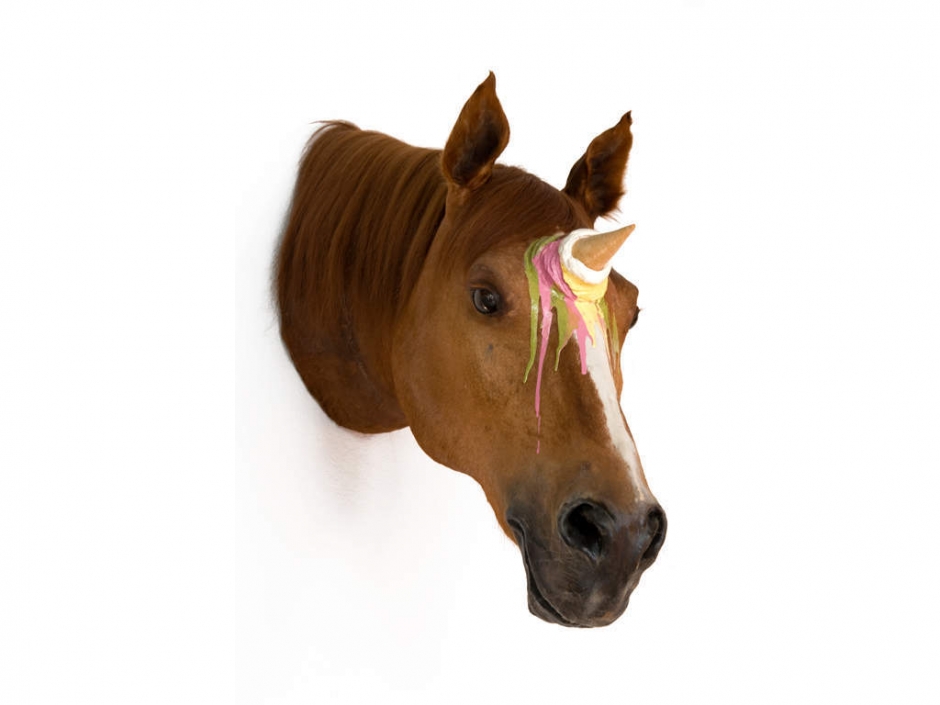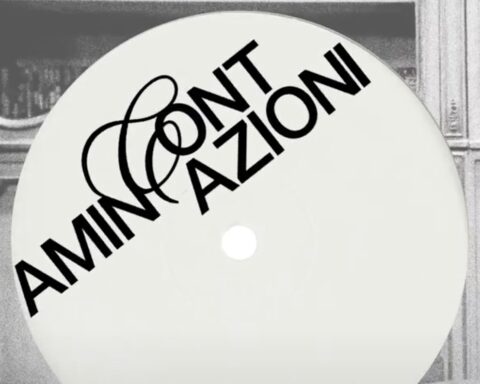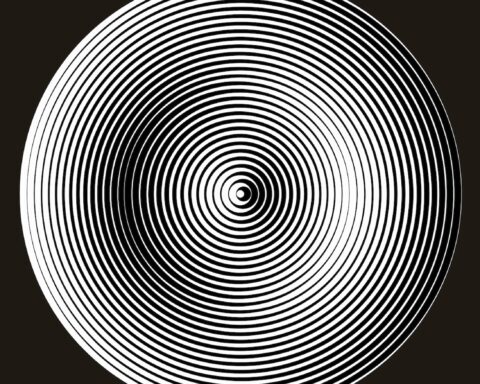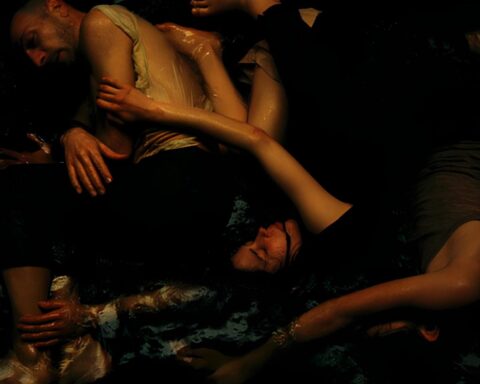Francesco De Molfetta, born in 1979, lives and works in Milan, Italy. His work, discovered by the famous Arte Povera art dealer Franco Toselli, has been exhibited in Italy and abroad in all major art fairs since 2000. He has exhibited in Europe and around the world in museums and private galleries. In December 2013 he was invited to the L.A. MOCA in an exhibition on the New Pop and Surrealist art scene. In 2010 the explosion with huge provocation at the Biennale of Sacred Art with the sculpture of “Lourdes Vuitton” (The Madonna wearing a Louis Vuitton dress). He has collaborated with brands such as Nike, Henry Cotton’s, Fender guitars and Lamborghini. He has written and directed four short films, one of which won the first Ambrogino d’Oro award for best work on the city of Milan. In 2010 the first museum hall in Vitoria in the Basque Country, in 2012 at the Tolentino Biennial, and in 2017 a personal room at the Triennale Museum in Milan.
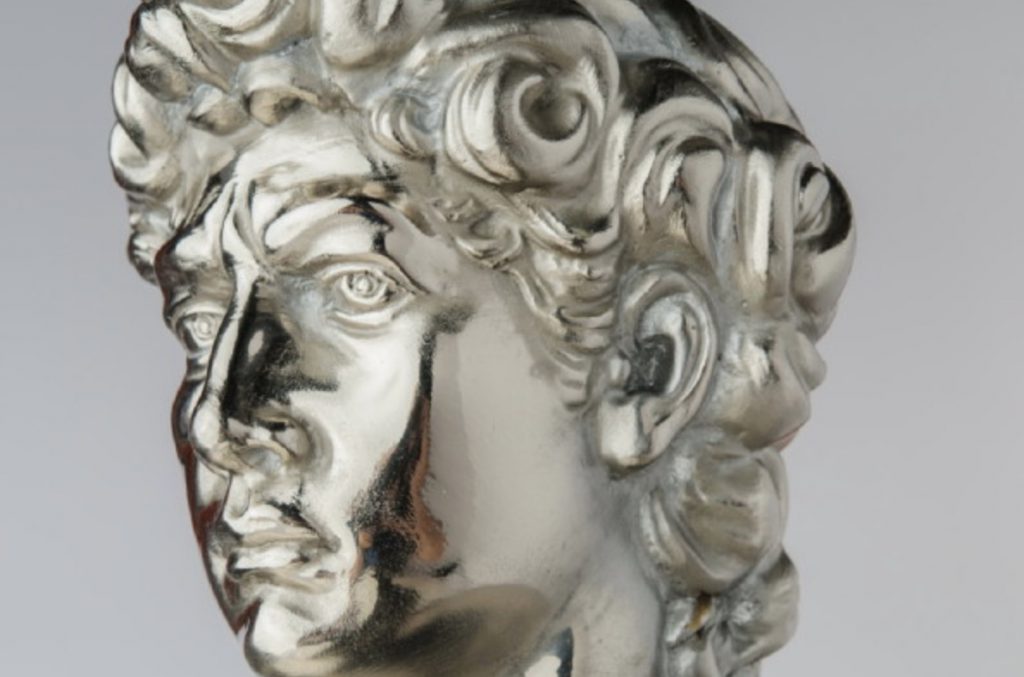
Marika Marchese: What are your reference icons?
Francesco De Molfetta: My reference icons are the most accessible, recognizable almost at an elementary level. They are never an end, but always a means; matter with symbols. Symbol etymologically derives from syn-ballein (Greek) which means to unite, to put together, to harmonize, understood as an image that leads us back, that brings us together with a bigger scenario. Therefore the figures I use are an aesthetic compromise with the sole purpose of being understood (fruito – guardato) on multiple levels.
M.M. How would you define your style? (Pop is not enough!)
F.D.M. This is why I feel dislocated from any association with Pop Art – my work uses pop icons, but it cannibalizes them in some way: they are just the starting point.
I would call myself an ironic conceptualist, a suggestive, a hermitic heretical erotic erratic hieratic. In reality, the definitions in the proper sense of giving finiteness / identity / filing to a work like the artistic one interests me very little. If a work needs to be identified and classified into a current it means that perhaps it does not have enough structure to be self-supporting, epistemic.
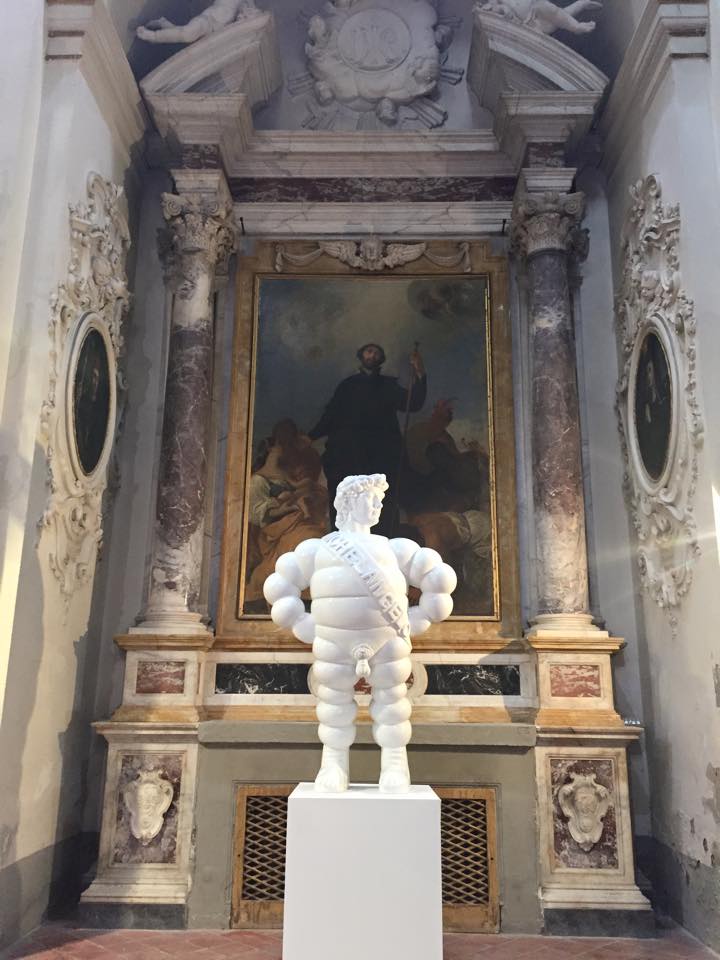
M.M. What are your next projects?
F.M. Shortly my museum exhibition dedicated to my ceramic production of the last few years will come to an end, the result of various residences and collaborations with historic manufacturers in Mondovì, at the International Museum of Ceramics (Mudec). In the autumn, a couple of important group exhibitions dedicated to materials in the Art (Lecco Museum) and the great return of figuration, a personal one at my reference gallery in Berlin (Kitscheramics / Kitscheramica), and a participation in an exhibition dedicated to Milan city curated by Sgarbi in December.
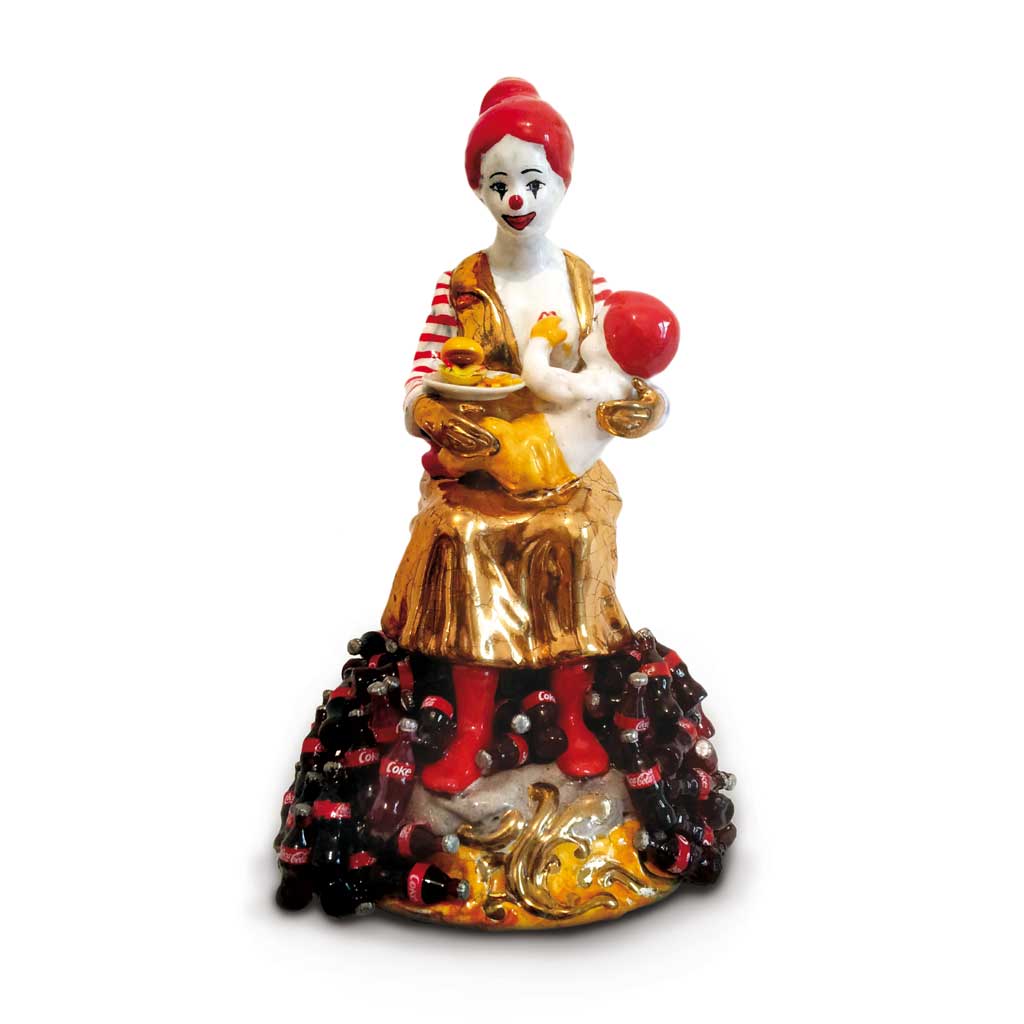
Sculpture Polychrome porcelain with third-fire intervention 2012
M.M. Is your creative process instinctive or rational? Tell us how a work is born.
F.D.M. Does there still exist someone who believes that the artist is sitting all day waiting for the fateful “inspiration”? The work comes from the work that comes from other work that comes from other work and so on. So it is not the inspiration that generates an artistic work as the permanence in the flow of creation that generates inspiration. You meet along the way, you can see from the window of the running train, by pure chance. The creative process is full of errors, attempts, doubts, but it is never static, it is the unconscious and involuntary result of a movement. I always like to mention the good Alighiero (Boetti) who says that a work is born “from necessity and chance”. So it is the result of a contingency rather than a calculated rational approach. The intentional latency of social criticism is decoded and applied above all by the spectator, the first of which is myself.
M.M. What’s your idea? Born of a criticism?
Also on this thread, we wanted to ask you whether: raise the Michelin-sized man a work of art or lower the David of Michelangelo to a popular level?
F.D.M. The MICHELangelo is a tribute to the greatest master of all time, Michelangelo, specifically to one of his masterpieces, the David, who suffered a rear-end collision by an equally monochromatic advertising icon: the Bibendum. It is almost a collage that engages Renaissance art with today’s street cartographic imagery, creating a visual short circuit and a calembour (so dear to the style of Aldo Mondino). Who do we recognize first: the David or the rounded features of the tire puppet? Or is the image of David so abused that it is downgraded to mere promotional information reproduced endlessly?
M.M. What is your relationship with the sacred?
F.D.M. “Sacred” is an Indo-European word meaning “separate”. Sacrality, therefore, is not a spiritual or moral condition, but a quality that pertains to that which has relation and contact with powers that man, not being able to dominate, perceives as superior to himself, and as such attributable to a dimension, hereinafter referred to as “divine”, thought however as “separate” and “other” with respect to the human world. From the sacred man tends to stay away, as always happens in the face of what is feared, and at the same time he is attracted to it as one can be in relation to the origin from which one day one is emancipated. (Umberto Galimberti)
Starting from this reflection by Galimberti I would say that all my work has an indissoluble relationship with the sacred, giving tangible form to what is most feared that at the same time constitutes what most attracts us, representing it, constituting a warning for a potential occurrence. Like a religious bedside fetish, as if we wanted to venerate it or keep an eye on it as an omen. For Claudio Parmiggiani, art arises from the thrust of men to pray, or rather to recognize their constitutive fragility and their exposure to the mysterious openness of the world. A prayer then: this is my work, it has the value of a prayer, an invocation that comes from the deep. Art is a bridge that unites the visible to the invisible, to the unpronounceable, for this it is sacred.
It always excites me when people smile in front of my works or they tell me: “I do not know why but I like it, I enjoy it, I can not explain it” – this marks the fortuitous meeting between the right suggestion and the right language. The indefinable decrees precisely the sacredness of the work itself.
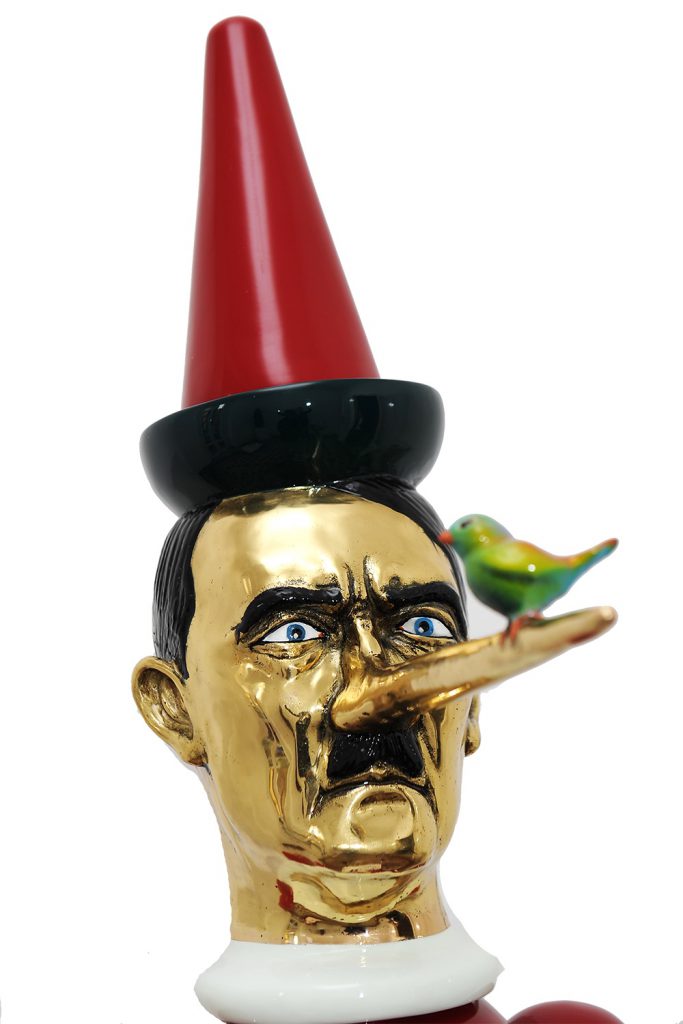
Polished and painted bronze, automotive gloss
M.M. With which artists, do you feel similar, if any?
F.D.M. Gino De Dominicis distinguished artists from creatives. Today I meet many creative people and a few, very few artists. A lot of misunderstanding, aspiring people, a lot of useless competition. For this reason I sometimes curl up in the past, in the history of art, like an animal in its den, wounded by the conflict for its survival. I just came back from a journey of more than 1000 km just to go and see a painting in person, a few inches from my face, just for the contemplative pleasure. A Madonna by Lorenzo Lotto saved from the collapse of the most recent earthquake in Umbria. It is living in close connection with my passion and with my “dáimōn” that makes me operate like this. Lately in the fairs I look for the origins, the history of art more than ambitious attempts at progress.
M.M. What materials do you use purely for your works?
F.D.M. Synthetic resins, terracotta, ceramic, wood, but my favorite is the bronze casting that I paint cold and then bake. Currently I’m working with porcelain applied to old photos that I buy at the markets, recontextualizing them in their old frames.
M.M. Why do you often use small sizes?
F.D.M. I have always loved intimacy, whispered thoughts, never the noise. This is why I am led to the small format, always wanting a vis-à-vis dialogue between the spectator and the work. In addition, I have always had very small and overflowing studies of objects, so working on the small is congenial to me, concentrated on the table in the dim light, the fire of matter that fades untamable.
It is nudity to expose / expose yourself in an exhibition, and as such requires a climate, an appropriate atmosphere, a dedicated interlocutor, rarefied times and spaces, dignity. I am fascinated by people who can stand on the edge, in the semi-darkness, not in the middle of a square on the podium. True Art does not need to be shouted, ostentatious, but only to be properly heard. The only way we can fight death is with memory. Here, perhaps the greatest responsibility that we have as artists is to be guardians of memory, defend it from offenses, knockoffs (rip-offs of) and concealment. Courses and appeals and emergency services.
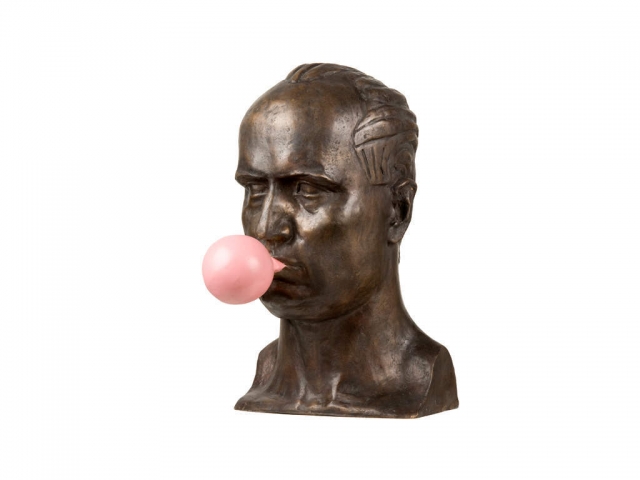
M.M. Where do you see your works, where are the pictures?
F.D.M. My most recent personal exhibition, “Old but Gold” is set in a baroque museum, respecting the pre-existences of the artifacts already present in the large display cases, made me reflect a lot on the ideal location of my sculptures. I find it very effective to place them in a dialogue with an ancient context, so that it can bring out their contemporary features, the most current finishes.
Minimalism bores me, I find it a forcing of Bauhausian memory that has so little of human organic authenticity.
M.M. Have you ever thought about public works, if so, where would you like to place them?
F.D.M. In the past I have exhibited outdoor bronzes several times in squares, public exhibitions and competitions. This gives the works a fearless and solemn aura, a ennobling pride, a boastful majesty that in the window of a gallery it would not have. I think back to artists that without this dimension unveiled, “shouted”, public, would not be heard. Like the big bluff of a lot of “streetArt”, which raises to presumptuous and senseless ugliness the status of works of art.
I would love to work for public projects, trying to preserve intimacy, the magic of suggestion that links the scenario to the material. I recently revisited Villa Litta Visconti Borromeo in Lainate and it enchanted me for these games of secrecy, a little magic to be discovered in the exhibition. Like today’s theme parks it is fascinating to be able to reveal the works, look for them, see them without tearing their mystery, without the perverse obsession of wanting to capture them and lock them up in a photographic shot. Or I would like to place them in old abandoned buildings, green areas regained by spontaneous vegetation, ancient places of worship in disuse – making their brightness shine in dialogue with the transience and the passing of time, giving a different suggestion, unexpected.


